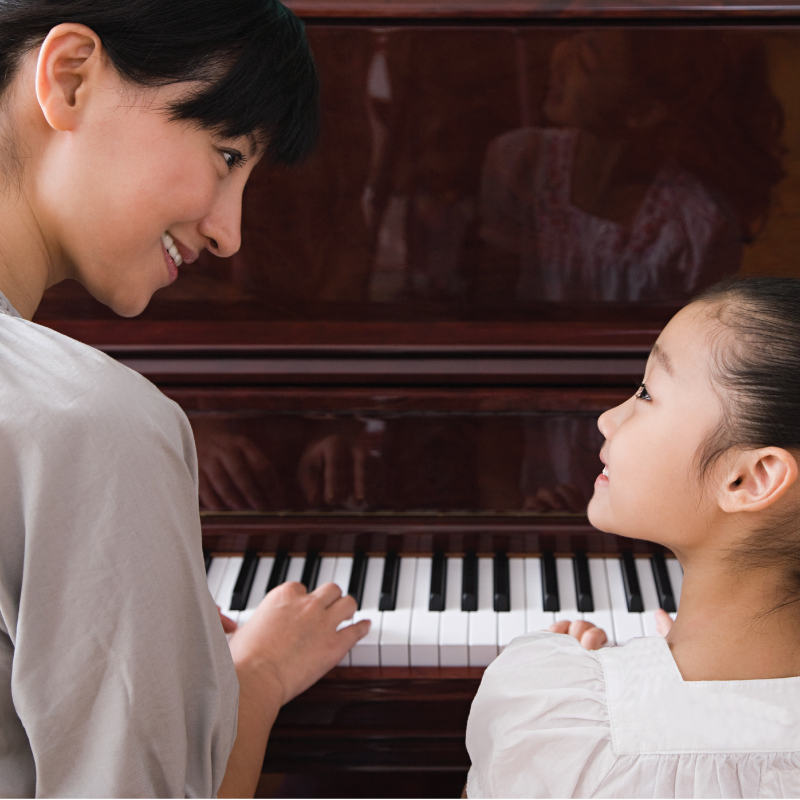- Pianos
- Used Pianos
- Our School
- Services
- Learning Centre
- Contact

A piano brings a lifetime of enjoyment to you and your family. As you might expect with any investment of this size, a piano requires periodic servicing to provide outstanding performance year after year. But to understand what maintenance is required, it is important to understand the nature of the piano.The beautiful, natural sound of a piano is due to the remarkable blending of such materials such as wood, metal, buckskin and wool. Together they create a uniquely timeless sound that no other instrument in the world can duplicate. While electronic synthesizers may approximate the sound of an acoustic piano, they cannot approach the true beauty of the real thing.
As with any piece of furniture, keeping drinks off finished wood surfaces is a simple rule always to follow. New piano finishes generally require only occasional cleaning with either a dry or damp cotton cloth. Older piano finishes may benefit from an occasional polishing with a good quality polish, but frequent polishing is not recommended.
When you look inside your piano, you’ll find a cast plate or “harp” strung with steel and copper-wound strings over a large expanse of wood which is the soundboard. If you look closer, you’ll discover an intricate system of levers, springs and hammers connected to the keyboard.
The complex system which causes a hammer to strike a string when you press a key is called the piano’s action. It is a marvel of engineering composed largely of wood and wool felt. This mechanism needs to be responsive to every nuance of the pianist’s touch – from loud, thunderous chords to soft, delicate passages.
When a piano leaves the factory, each of its parts are adjusted to a tolerance of a few thousandths of an inch. This process is called action regulation. Because the wood and felt parts of the action may change dimension due to humidity and wear, the action must be serviced occasionally to maintain its responsive qualities.
Extreme swings from hot to cold or dry to wet are harmful to your piano. Dryness causes the piano’s pitch to go flat; moisture makes it go sharp. Repeated swings in relative humidity can cause soundboards to crack or distort. Extreme dryness also can weaken the glue joints that hold the soundboard and other wood portions of the piano together. Moisture may lead to string rust. A piano functions best under fairly consistent conditions which are neither too wet or dry, optimally at a temperature of 68 degrees F and 42 percent relative humidity.
Using an air conditioner in humid summer months and adding a humidifier to your central heating system will reduce the extremes of high and low humidity. Room humidifiers and dehumidifiers, as well as systems designed to be installed inside of pianos will control humidity-related disorders still further.
A piano also periodically requires a service called voicing. Because the tone changes as the felt hammers wear, periodic voicing of the hammers is necessary so that your piano will have an even, full tone throughout the entire scale, and produce the widest possible dynamic range.
The Piano Technicians Guild, Inc. (PTG) is a non-profit organization dedicated to expanding the knowledge and skill of professionals in the piano industry. The largest organization of its kind in the world, its membership includes piano technicians, rebuilders, piano designers and manufacturers, enthusiasts and retailers. PTG certifies Registered Piano Technicians (RPTs) through a series of rigorous examinations designed to test their skill in tuning, regulation and repair. Those capable of performing these tasks up to a recognizable worldwide standard receive RPT certification.
For more information on how to contact a Registered Piano Technician, write to us at the Piano Technicians Guild, Inc., 3930 Washington, Kansas City, MO 64111 for a list of RPTs in your area.
1412 Bank Street
Ottawa, ON
K1H 7Y9
Music School: 613-731-1379
Showroom: 613-731-5678